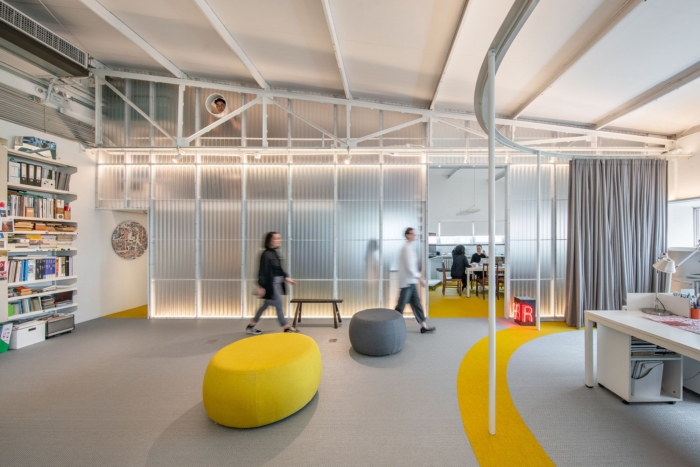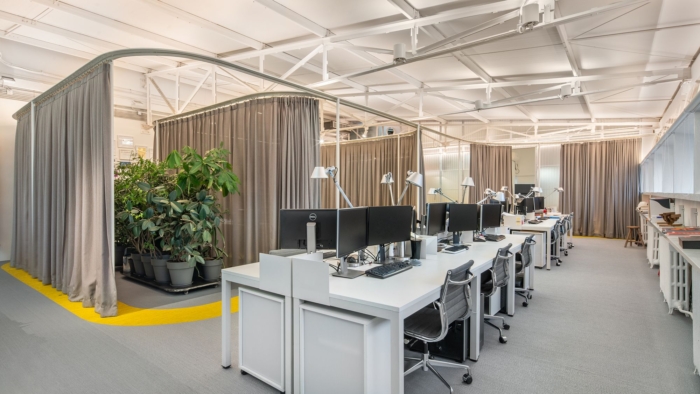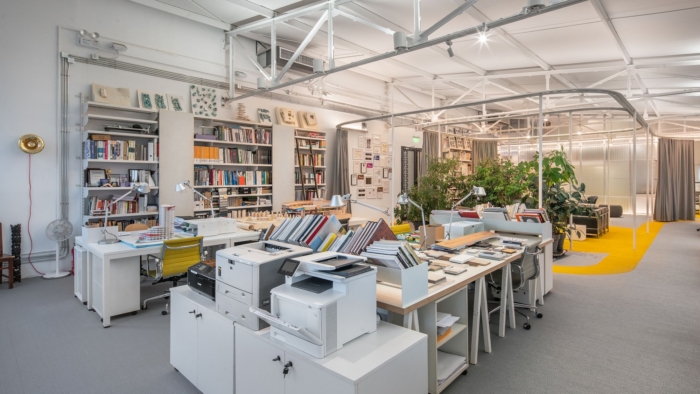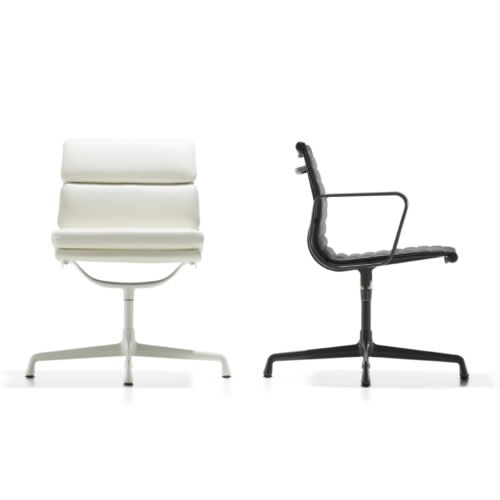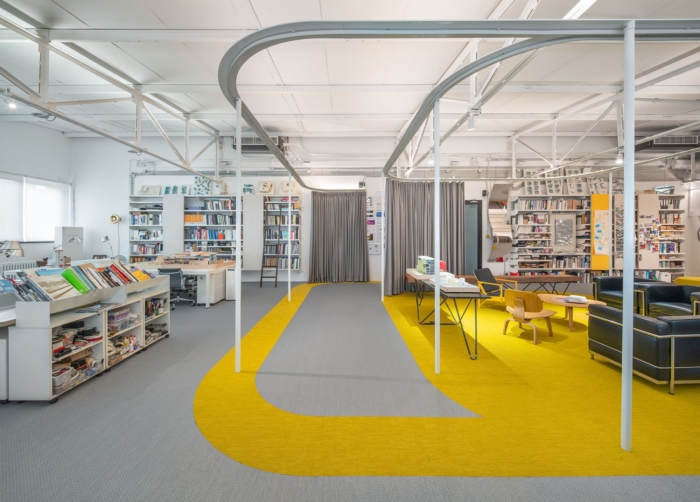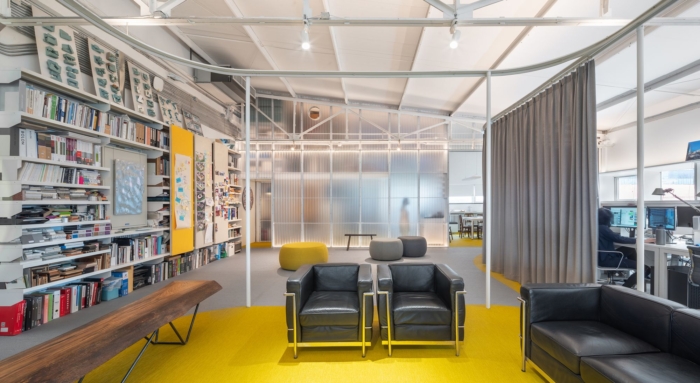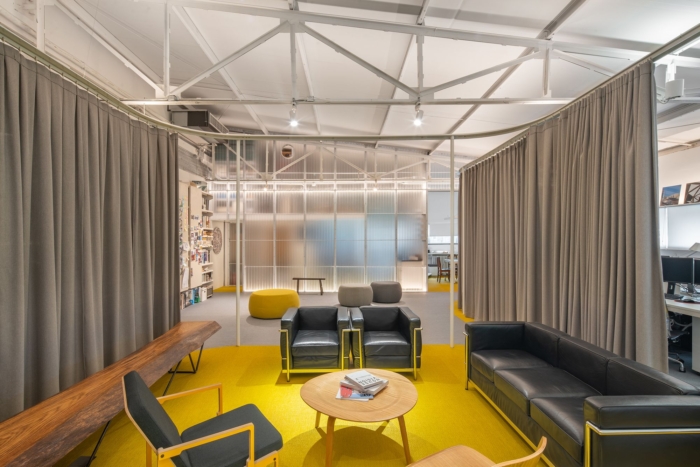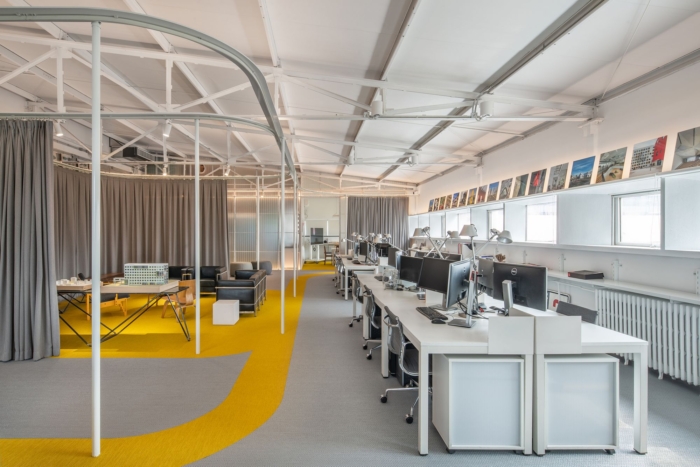
Crossboundaries Offices – Beijing
Forced to rethink the way people experience both home and the office, Crossboundaries responded to the COVID-19 pandemic with a fully adaptable and functional workplace for their practice in Beijing.
Crossboundaries designed a functional and collaborative space for their own offices in Beijing, China.
Beyond workspace. Reinforcing innovation in resilience
By the end of 2020, the two most significant typologies for everyday use as a society were abruptly shaken by COVID-19. The home as a place of life and the office as a place of work were under reconsideration.Taking all of this into account, Crossboundaries started dreaming of a future typology that could fluctuate and adapt to a variety of rapidly changing scenarios. While some design factors were open for reconsideration -size, atmosphere, occupation and communication strategies- the workspace location remains intentionally unchanged and is in the same neighborhood as the firm’s previous office.
Located in the top floor of a five-story educational institution that had already undergone several renovations, the office was a fairly new add-on steel structure attached to the concrete skeleton of the building. This provided an almost 360-degree view and exposure to North, South and East that assure sunlight throughout the day. The users were not the only agent to be taken into account: cycles and rhythms of the architectural building, its urban surroundings -even the furniture and logistics that the architectural practice needs to operate with- were all factors to work with.
Faced with a challenge of prohibition on welding, hanging or attaching any new elements to the existing roof structure and all external walls, the design becomes very effective in satisfying Crossboundaries’ company needs while articulating the roughly 300 m2 space with very few elements, therefore committing to minimum intervention.
A functional area offers separated meeting rooms, kitchen, storage and rest areas that are included into a former repurposed mezzanine level to maximize organization. These rooms are physically separated with a semi-transparent double layered wall made out of polycarbonate corrugated panels. The only continuous solid wall without windows accommodates a vast shelf that includes the material and reference library, together with a selection of models and Crossboundaries Award display.
The main space is fluent and continuous, shaped by a lightweight curtain structure that functions as an island and connects the invariable working stations area together with a central multifunctional space. The latter is a leisure area focused on providing different scenarios beyond the regular working day: the loose furniture can be re-arranged and separated acoustically to meet the various requirements of the space over time. And the carpet design follows the curtain rail to further reinforce this zoning concept and hint at the users to explore the flexibility of the space. More than five activities and meetings –both formal and informal- can happen at the same time, providing specific atmosphere for each communication processes.
This multifunctional space is supported by an inherited color palette from the previous office that had already become the corporate identity of Crossboundaries: a combination of grey and yellow elements and textures bring focus and stimulation to the team. A number of inner vegetation islands were not to be left behind in the moving and they contribute to the layout by adding another color while integrating natural elements inside the office. The plants sit into movable platforms, behaving like attractors around the office, each time in a different position.
While the pandemic has brought radical transformations to business itself, Crossboundaries believes that the design of office spaces also has the need to undergo a forward-looking approach. This working platform has merged with a sense of domesticity where the existing is revitalized and incorporated by reusing every furniture and art piece that was once part of the former workplace – tables, chairs, curtains, lamps, shelves. So that whenever socializing is more back to normal, Crossboundaries will continue to share their space and bring people together.
Design: Crossboundaries
Design Team: Binke Lenhardt, DONG Hao, Elena Gamez Miguelez
Photography: BAI Yu
